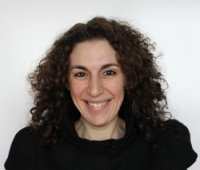Specialized iNANO & Chemistry Lecture: Macromolecular Engineering at Interfaces: New concept and biomaterial applications
Fouzia Boulmedais, Institut Charles Sadron – Strasbourg, France
Info about event
Time
Location
iNANO AUD (1593-012), Gustav Wieds Vej 14, 8000 Aarhus C

Fouzia Boulmedais, Institut Charles Sadron – Strasbourg, France
Macromolecular Engineering at Interfaces: New concept and biomaterial applications
Functional materials are predicted to have an enormous impact on many aspects of society, including next generation health care and energy-related technologies. For example, functional or “smart” materials can be used for the development of selective tools for the detection of biomolecules in biological fluids, (e.g. glucose in blood, saliva and even tears) and can be used for life-changing applications (e.g. biosensors for glucose monitoring used by people who have diabetes. Bottom-up approaches, using self-assembly principles, are increasingly considered to be the most appropriate routes for the synthesis of functional materials. Inspiration often comes from the biological world where many outstanding examples of highly complex functional nanoscale architectures have been discovered. At a high structural level, self-organizations resulting in complex tissue morphologies are driven by morphogen gradients, specific molecules to which cells respond in a concentration dependent manner. We extended this process to a self-construction of films induced exclusively from a surface through the use of electrocontrolled click chemistry thanks to a gradient of catalysts Cu+ [1]. Merging the fields of polyelectrolyte multilayers and morphogen-driven film buildup, we developed a strategy which allows the self-assembly of oppositely charged macromolecules on a surface using a pH gradient [2]. Inspired by the catechol numerous properties, a mussel protein derived molecule, we designed a catechol based electrochemically triggered construction of films based on an organic morphogen: a synthesized ethylene glycol spacer bearing catechol groups on both sides, named bis-catechol [3].
Alternate or simultaneous spraying of polysaccharides appears to be a convenient and fast procedure for biomaterial surface modifications. We investigated polysaccharide films obtained by simultaneous and alternate spraying of a chitosan (CHI) solution as polycation and different anionic polysaccharides for biomedical application [4]. Prevention of pathogen colonization of medical implants is a major medical and financial issue since infection by microorganisms constitutes one of the most serious complications after surgery or critical care. We developed a self-defensive coating against both bacteria and yeasts where the release of the antimicrobial peptide is triggered by enzymatic degradation of the film due to the pathogens themselves [5].
References:
1. Rydzek et al. Angew. Chem. Int. Ed 2011, 50, 4374
2. Dochter at al. Langmuir 2015, 31, 10208.
3. Maerten et al. Langmuir 2015, 31, 13385
4. Cado, G. et al. Langmuir 2012, 28, 8470
5. Cado, G. et al. Adv. Funct. Mater 2013, 23, 4801
Biography:
Fouzia Boulmedais graduated from the University of Strasbourg where she received her Ph.D. in chemistry and physical chemistry in 2003. From 2001 to 2003, she worked as a post-doc with prof. Marcus Textor at ETH Zurich (Switzerland) and with Prof. Gleb Sukhorukhov at Max Planck Institute (Golm, Allemagne) in electrodissolution of multilayers of polyelectrolytes. After a second post-doc with Valérie Marchi in 2005 in functionalisation of quantum dots, she was appointed CNRS researcher at Institut Charles Sadron in Strasbourg. Since 2012, she is deputy director of Institut Charles Sadron in charge of the technical and administrative staff. Her research activity deals with the use of an electrical stimulus to study its influence on polyelectrolyte multilayer films and to control the construction of polymer films as well as with the application of polyelectrolyte films in the field of biomaterials particularly as antibacterial and antifungal coatings. She is co-author of more than 70 publications and 2 patents. In 2013, she received the Young Researcher prize of the Division of Physical Chemistry, common to the Chemical Society of France and the French Physical Society.
Host: Associate professor Alexander Zelikin, Department of Chemistry, Aarhus University
